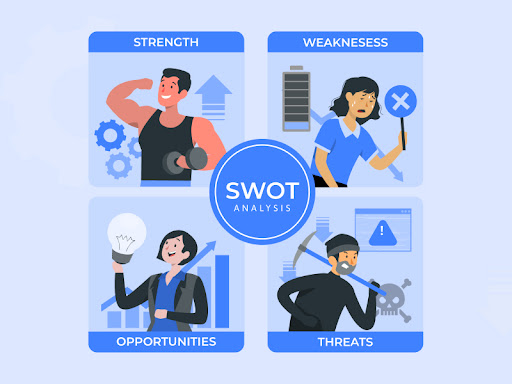Software development has become one of the most popular and in-demand business niches in the past few years. Still, very few people know how to write a software development business plan. You can talk about your idea until you’re blue in the face, but no one will take you seriously without writing it down in your business plan.
A business plan is essential to start and run your own software development business successfully. This guide will provide you with everything for a software development business plan, including choosing the right location, finding qualified employees, and leveraging customer relationship management systems.
Also, Read this Blog - Exploring Latest Software Development Trends in 2022? Here You Go!
Why is Writing a Software Development Business Plan Essential?
Any business, especially a startup, needs a comprehensive business plan that will serve as a roadmap for the company’s first few years. The Software Development Business Plan will lay the foundation for success. There are so many moving parts to consider when creating software. From development and testing to marketing, there are a lot of factors that go into making a successful software product.
In other words, Business plans typically include detailed information combining the following terms to improve the chances of success:
Market analysis: Market study involves learning about the variables and conditions relevant to your industry
Competitive analysis: Identify the advantages and disadvantages of your competitors
Customer division: To better your marketing, divide your consumer base into groups based on certain attributes
Marketing: Research and use it for the promotion of your business
Logistics and Operations Plan: Determine and implement the most effective production method
Cash flow projection: To know about the inflow and outflow of the cash going into your business
Strategy: Make a comprehensive strategy for the long-term expansion of your business
A well-crafted business plan can help you articulate your vision for the company, set measurable goals and track progress over time, attract talented employees and partners and secure funding from investors. But what goes into a good business plan? Let’s deep dive into the process of writing a Software development business plan.
Steps to Write a Software Development Business Plan
Writing a business plan is not a one-day process. It is a long process and may take time to make a proper plan. But where should you start? There are several sections to think about before writing your business plan. A software development business plan should include an executive summary, company description, market analysis, product/service line, sales and marketing strategy, and financial projections.
Each section should be detailed and thorough, as this plan will be used to convince potential investors to put money into your company. Here are some steps to write your Software Development Business Plan:
Step 1 - About the Company
When writing a plan for your business, it is important first to describe the history of your company. The history of the business, its location, and the type of services it offers. It will also mention the management team, staff, and firm missions and ideals. There are many important facets to consider. From your initial funding and product development to marketing and sales, each piece needs to be carefully planned out for your business to be successful.
Providing the past story of your business will bring you interested investors. Anyone interested in your business will know who you are and what you offer to the end users. It would help you to establish a distinct brand that is both educational and appealing.
Step 2 - Financial Aspects for Starting your Company
You will need some initial capital to get started. This can come from personal savings, loans, or investments from friends and family. You should also create a budget for your first year of operation. This will help you track your expenses and ensure that you are staying on track. Additionally, you should create financial projections for the next three to five years. This will give you an idea of how much revenue you can expect and how much profit you can expect. Finally, you should have a plan for an exit strategy in case things don't go as planned.
Step 3 - Create a SWOT Model

Creating a SWOT model is one of the first steps you should take when writing your software development business plan. By identifying your company's strengths, weaknesses, opportunities, and threats, you can create a well-rounded plan to help you succeed. Here are some examples of what each category may entail:
- Strengths- What makes your product or service special?
- Weaknesses- What is your product missing?
- Opportunities- What trends are on the rise in the industry?
- Threats- Is anything happening in the industry that could hurt your company?
By completing this step, you'll better understand what areas need improvement before moving forward with other sections. After assessing where you need to improve, it's time to set goals for how these improvements will be made. Be specific about what these goals will look like and make sure they align with who you want to target as customers.
Step 4 - Competitor Analysis
In any industry, it’s important to know your competition and its offering. The software development industry is no different. When writing your business plan, including an overview of your competitors and what they offer. This will help you better position your own company in the market. Here are three tips for conducting a competitive analysis for your software development business plan:
- Research Your Competition- Conduct extensive research on companies in your target market that offer similar products or services. Read their marketing materials, case studies, press releases, social media posts, and other information they publish online. You should also reach out to company representatives (or even competitors) with questions about what they do or who their customers are.
- Figure Out What Sets You Apart- Consider what sets you apart from other competitors in the space and include this information in your business plan. For example, list it prominently in your business plan if you have strong connections within an industry niche that others don't have access to (such as being based in a specific region). Hence, potential investors know that it's an advantage of yours.
- Low Costs than others- Consider what your competitors are costing for the same product or service you are offering. This approach will help you to price your products or services effectively.
Step 5 - Build a Team
The leadership team consists of the CEO (Chief Executive Officer) overseeing the company's main processes. CTO (Chief Technology Officer) - responsible for technological research and implementation. CMO (Chief Marketing Officer) & CSM (Chief Sales Officer), the first one is responsible for engaging potential customers and making them happy with the product or service and the latter closes deals with potential customers and offers your product or service.
In addition to the leaders, you should consider the management team consisting of project managers, programmers, designers, testers, and other personnel as your company needs. If you decide to go further, scalability is necessary.
Step 6 - Technology to Provide Products/Services
To be a custom software development company, your main product will be coding. But that doesn't mean that's all you have to offer. You also need to hire software developers with the best technology to provide your products or services.
Step 7 - Summarize Your Plan
Summarise your business plan in a specific format, which makes it simpler to read. With its assistance, you will grab the reader's attention and demonstrate the true information. Keep the language simple and be honest with your approach. Be creative and show you can provide reasoning and decision-making.
Step 8: Use Infographics.
Visual representations always make it easier for people to understand your motives. Including charts, tables, illustrations, infographics, market analysis, production plan and business mapping will make your business plan attractive and knowledgeable.
Wrapping up
Creating a software development business plan doesn't have to be complicated. Following the steps outlined in this guide, you can create a well-organized and complete plan that will serve as a roadmap. There are plenty of resources are available to assist you. With a little time and effort, you can be on your way to starting a successful software development business. By hiring software developers with the best technology, your business can execute your plan into reality.
To wrap things up, let's review the key takeaways for writing a software development business plan:
- Keep it short and sweet - remember that you're writing a business plan, not a novel.
- Market Knowledge - Ensure you understand your target market and audience.
- Do your research - from understanding your competition to putting together realistic financial projections.
- Be realistic in your assumptions and planning - overestimating your revenue and underestimating your costs can be disastrous for your business.
- Don't forget the details - from insurance to office space, make sure you've thought of everything necessary to get your business going.


Comments (3)